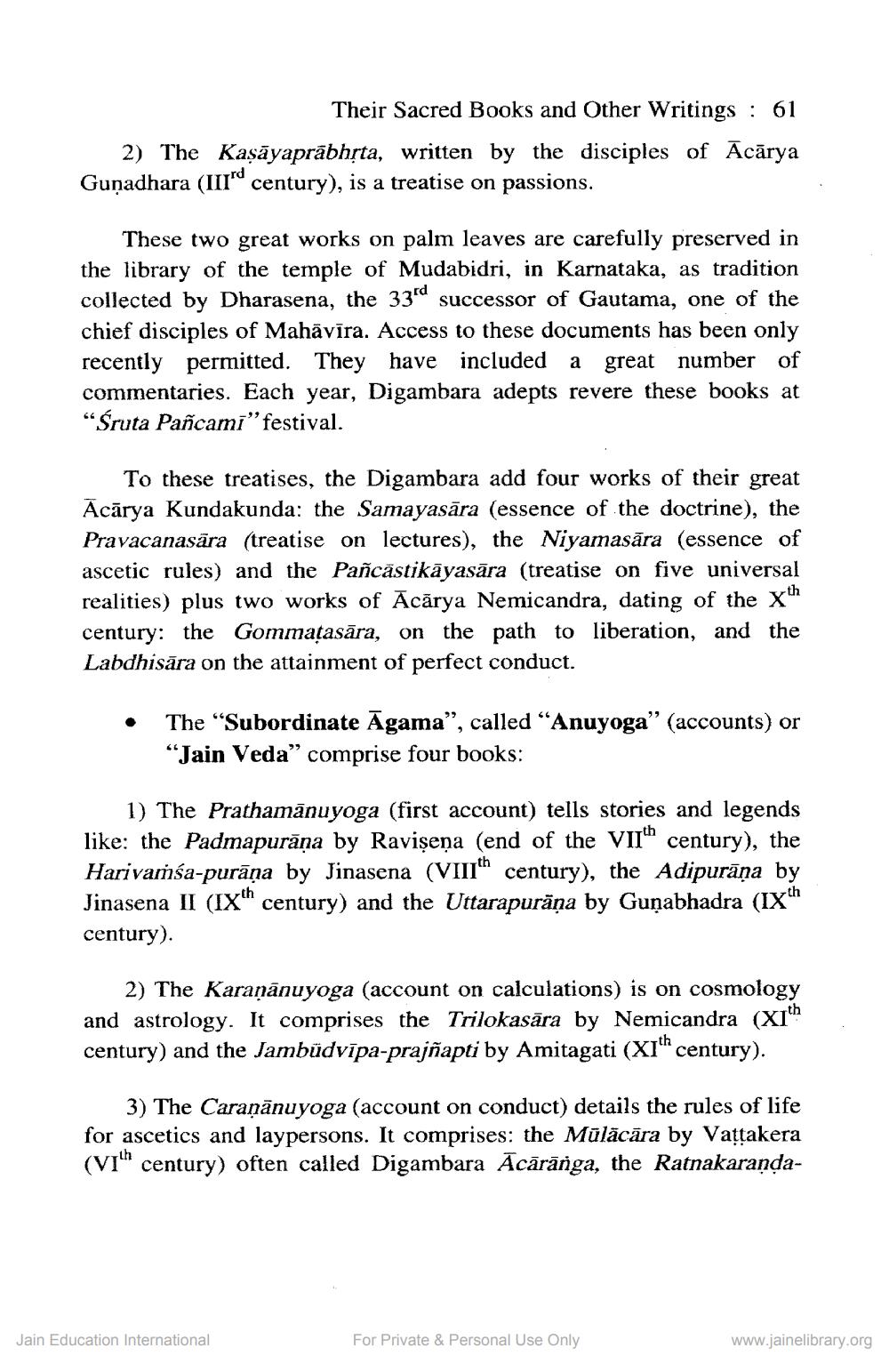________________
Their Sacred Books and Other Writings : 61 2) The Kaşāyaprābhịta, written by the disciples of Ācārya Guņadhara (III" century), is a treatise on passions.
These two great works on palm leaves are carefully preserved in the library of the temple of Mudabidri, in Karnataka, as tradition collected by Dharasena, the 3364 successor of Gautama, one of the chief disciples of Mahävīra. Access to these documents has been only recently permitted. They have included a great number of commentaries. Each year, Digambara adepts revere these books at "Śruta Pañcami” festival.
To these treatises, the Digambara add four works of their great Ācārya Kundakunda: the Samayasāra (essence of the doctrine), the Pravacanasāra (treatise on lectures), the Niyamasāra (essence of ascetic rules) and the Pañcāstikāyasāra (treatise on five universal realities) plus two works of Acārya Nemicandra, dating of the xth century: the Gommațasāra, on the path to liberation, and the Labdhisāra on the attainment of perfect conduct.
•
The “Subordinate Āgama”, called “Anuyoga” (accounts) or “Jain Veda” comprise four books:
1) The Prathamānuyoga (first account) tells stories and legends like: the Padmapurāņa by Ravişeņa (end of the VII" century), the Harivaṁsa-purāņa by Jinasena (VIII" century), the Adipurāņa by Jinasena II (IX century) and the Uttarapurāņa by Guņabhadra (IX"h century).
2) The Karaņānuyoga (account on calculations) is on cosmology and astrology. It comprises the Trilokasāra by Nemicandra (XI"" century) and the Jambüdvīpa-prajñapti by Amitagati (Xi'" century).
3) The Caranānuyoga (account on conduct) details the rules of life for ascetics and laypersons. It comprises: the Mūlācāra by Vattakera (VI" century) often called Digambara Ācārānga, the Ratnakaranda
Jain Education International
For Private & Personal Use Only
www.jainelibrary.org




